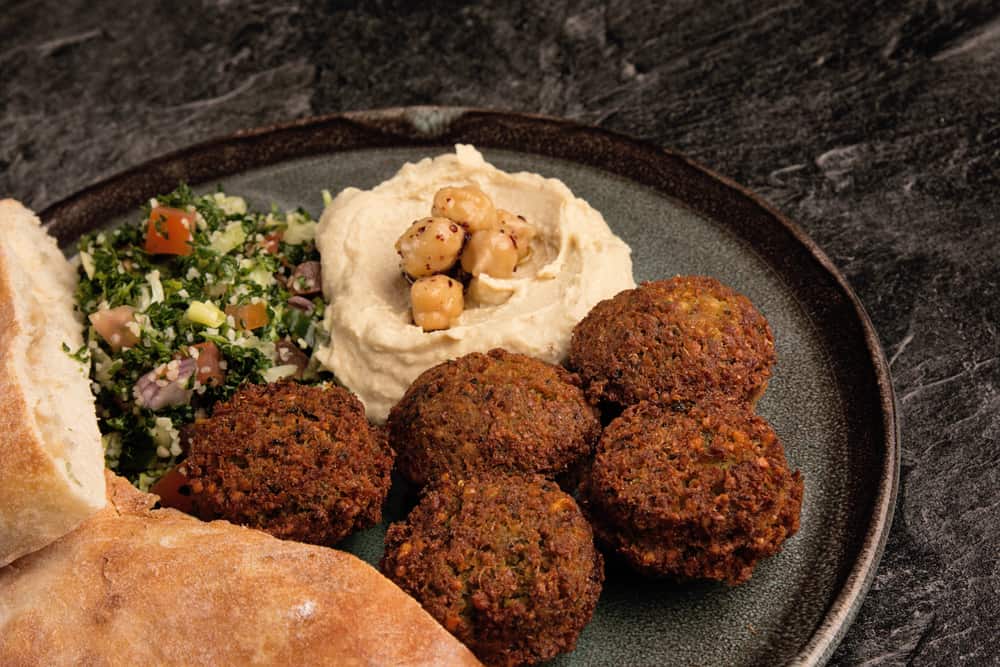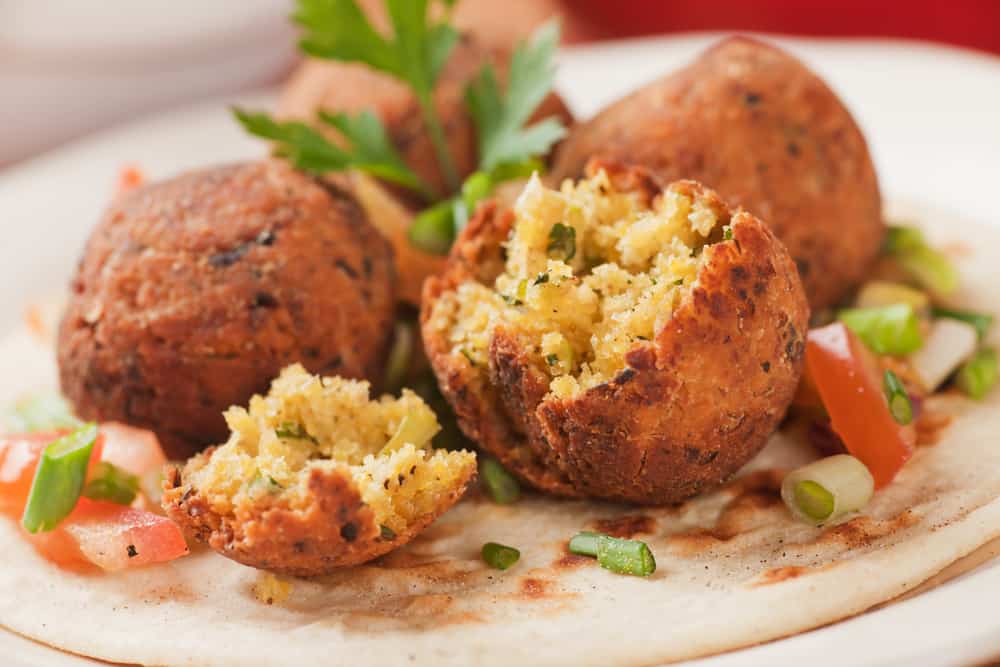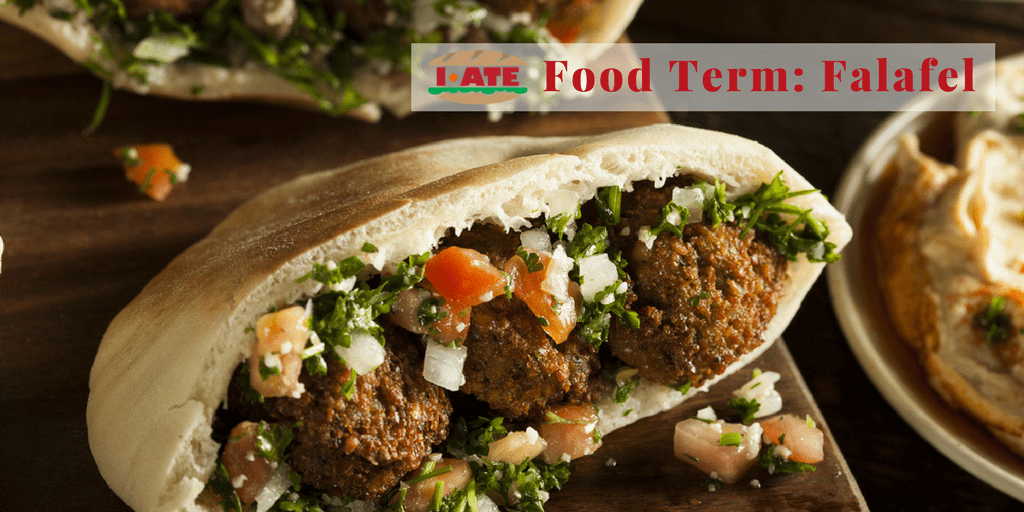This week’s I·ATE Food Term presentation is all about Falafel – deep fried chickpea or fava bean balls or patties commonly wrapped in pitta bread and topped with salad, pickled vegetables and tasty sauces. Alternatively – according to one’s preference – spiced Falafel is served on a plate and garnished with salad, vegetables and hummus as well as hot, garlic or tahini based sauces. The word Falāfil (Arabic: فلافل), plural of Filfil (فلفل) is translated into ‘pepper’ in English.
 The exact origin of Falafel is somewhat controversial. The dish is commonly claimed to have first been eaten by the Copts of Egypt and to have then spread throughout the Middle East. The Copts, an ethnoreligious Christian community, argued that humankind’s original state was vegetarian and thus integrated Ta’amiya (Arabic: طعمية, translated into ‘nourishment’ in English), the common name for Falafel in Egypt, into their diet – alongside numerous other vegan and vegetarian dishes. However, the very origin of the popular chickpea or fava bean balls have triggered political discussions between Arabs and Israelis in the past, with the result that Falafel is now considered to be the national dish of Egypt as well as Palestine and Israel. While Egypt and other Arab countries use fava beans for their basic recipe, Falafel in Israel is traditionally made from chickpeas.
The exact origin of Falafel is somewhat controversial. The dish is commonly claimed to have first been eaten by the Copts of Egypt and to have then spread throughout the Middle East. The Copts, an ethnoreligious Christian community, argued that humankind’s original state was vegetarian and thus integrated Ta’amiya (Arabic: طعمية, translated into ‘nourishment’ in English), the common name for Falafel in Egypt, into their diet – alongside numerous other vegan and vegetarian dishes. However, the very origin of the popular chickpea or fava bean balls have triggered political discussions between Arabs and Israelis in the past, with the result that Falafel is now considered to be the national dish of Egypt as well as Palestine and Israel. While Egypt and other Arab countries use fava beans for their basic recipe, Falafel in Israel is traditionally made from chickpeas.
Originating from the Middle East, Falafel has – slowly but surely – conquered Westerners’ hearts and is becoming more and more visible on the streets of Europe’s and North America’s cities. Undoubtedly, Falafel is the strongest competitor of yesterday’s Kebabs and Hamburgers – full of plant-based protein, complex carbohydrates and fibre. The healthy street food alternative and meat replacement is cheap and – in the pitta version – an undeniably great portable snack.

If you wish you can easily make Falafel yourself. Middle Eastern food shops – and even some regular supermarkets – sell tasty Falafel powder mix which is easy to prepare. If you have some more time on your hands you might as well prepare the whole dish yourself. You can find various traditional recipes online. The main ingredient is – not surprisingly – chickpeas or fava beans. Be careful, however, not to cook but soak the chickpeas or beans in water overnight in order to obtain the right texture!
Shahiat jayida ! (Arabic : شهية جيدة , translated into ‘enjoy your meal’ in English)

Sources:
https://en.wikipedia.org/wiki/Falafel
http://time.com/3772723/falafel-fiber-chickpeas/
http://www.arabamerica.com/recipe/egyptian-tamiya-falafel/
Written by Lissa Haid-Schmallenberg – Study Visitor at the Terminology Coordination Unit of the European Parliament (Luxembourg). Lissa is a student at the University of Luxembourg and currently enrolled in the trilingual Master Learning and Communication in multilingual and multicultural Contexts. She holds a Bachelor degree in Social and Cultural Education from the University of Bologna, Italy.

